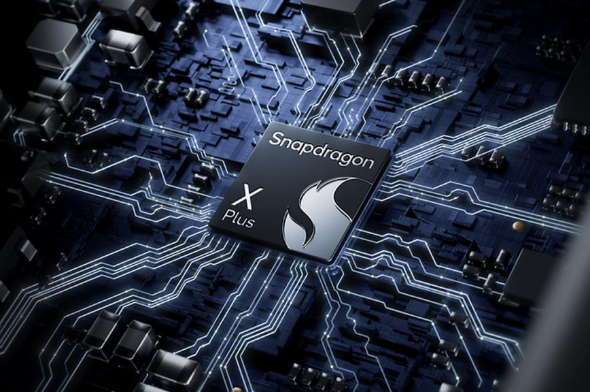Connection to DriversCloudCreate a DriversCloud.com accountReset your DriversCloud.com passwordAccount migration
Qualcomm presents the Snapdragon X Plus and Elite: for a true ARM alternative on Windows
A serious competitor to AMD and Intel is gearing up to transform the laptop market. That's all the bad news we can wish.
While Qualcomm is not the only company working on the ARM platform and planning solutions adapted to the Windows operating system, the aura - and the means, let's not be naive - of the San Diego-based company make it a particularly serious client and a major competitor for AMD and Intel, who have been sharing Windows exclusivity for decades. For months, Qualcomm has been saying that " revolutionary " new chips are on the way, but it's only in the last few weeks that things have become clearer, and on April 24, a press release clarified the company's intentions.
All in all, Qualcomm is aiming to release four ARM processors that will turn the world of PCs and notebooks upside down. The first of these processors will undoubtedly be the least expensive, the Snapdragon X Plus, also known as the X1P-64-100. This chip features 10 Oryon CPU cores, for which Qualcomm claims " CPU performance up to 37% faster than competitors, while consuming up to 54% less energy ". The Snapdragon X Plus also boasts 42 MB of cache and a maximum frequency of 3.4 GHz. Qualcomm underlines a power of 45 TOPS (tera operations per second) and mentions support for LPDDR5X RAM at 8,446 MT/s.
The Snapdragon X Plus will undoubtedly be Qualcomm's most widely distributed model, but it's not the most powerful in the future range. In fact, the Snapdragon X Elite chipset will feature three more powerful models: the X1E-78-100, X1E-80-100 and X1E-84-100. These three processors share the same Oryon cores as the Snapdragon X Plus, but go one step further, with 12 cores each. The cache (42 MB) remains identical, as does the RAM, still LPPDR5X-8448. On the other hand, the three Snapdragon X Elite have higher frequencies of 3.4 to 3.8 GHz, with peaks of up to 4.2 GHz on two cores for the two most muscular references.
To underline the potential of its processors, Qualcomm was keen to give a number of demonstrations, relayed in particular by our colleagues at The Verge. One of them focused on the video game Control. No dedicated graphics card was used, and the game still managed to run at 30 frames per second. More generally, it would appear that a Snapdragon X Plus processor is capable of competing with Intel's Core Ultra 9 185H and AMD's Ryzen 9 8945HS. However, we won't be able to judge for ourselves just yet: Qualcomm is suggesting that the first computers will be released around mid-2024. A few weeks of patience, then.





